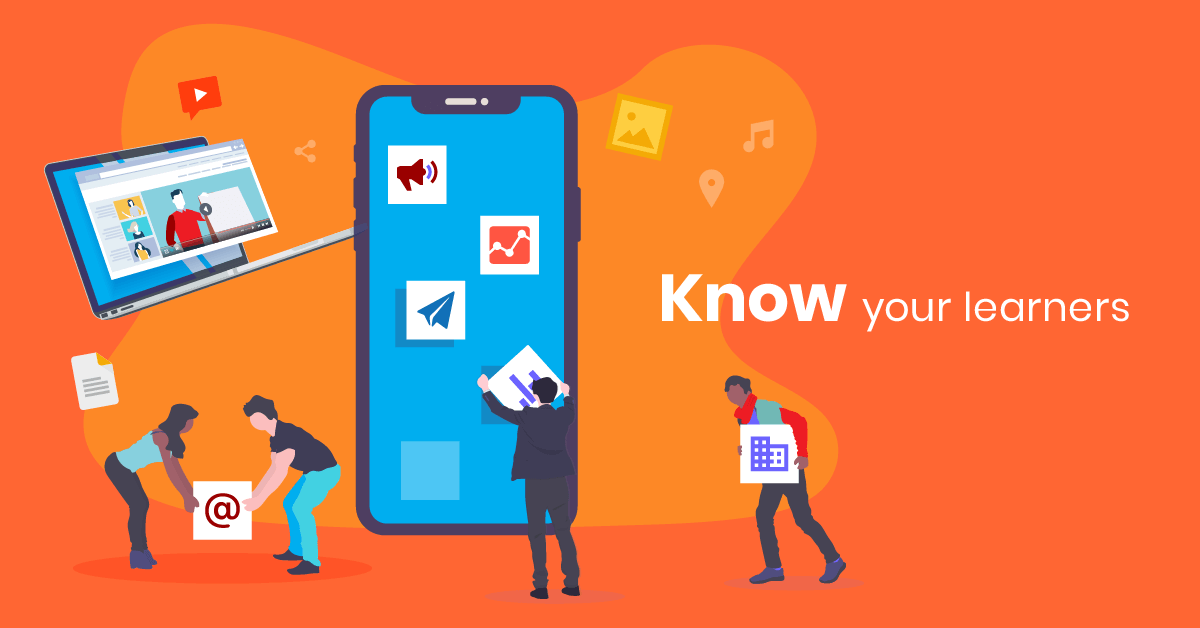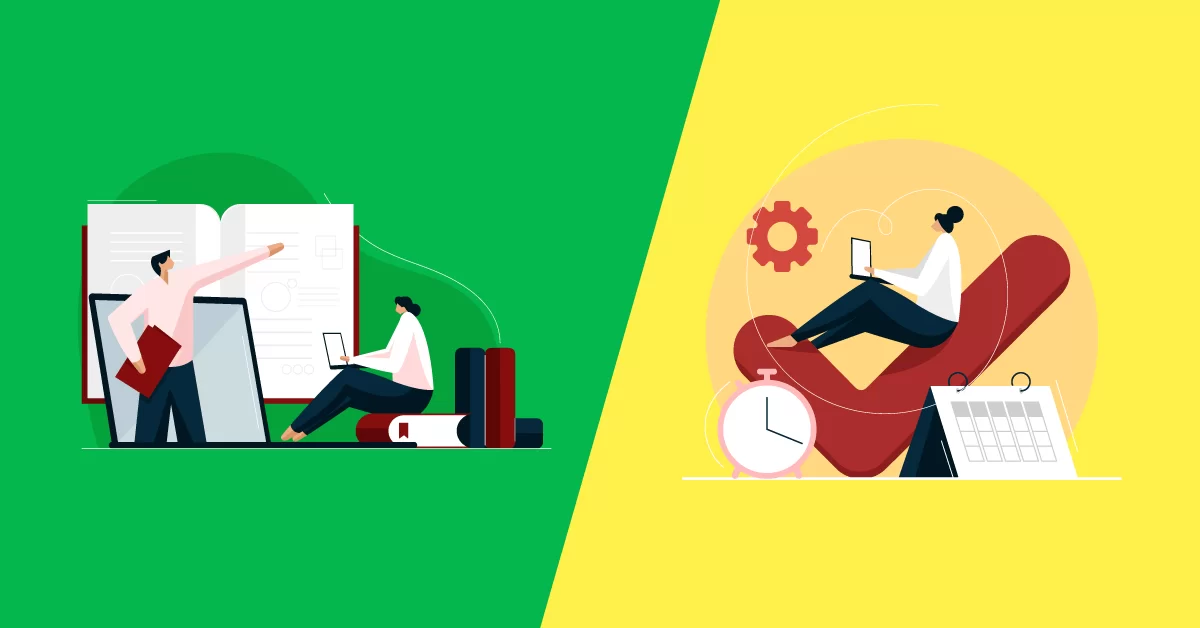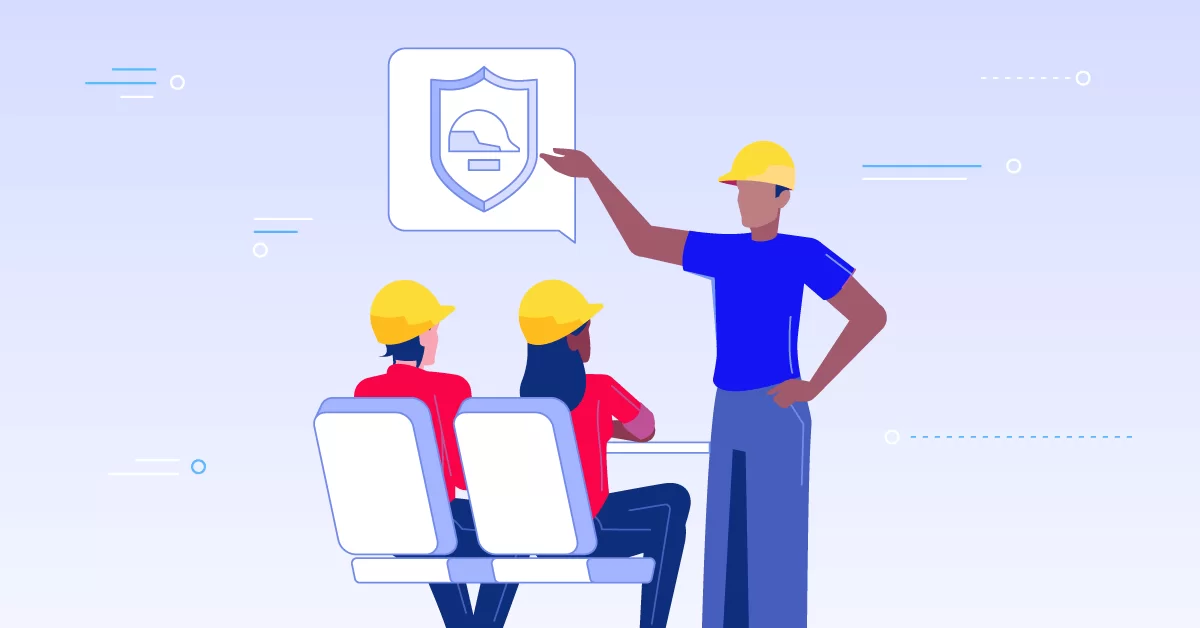The point is, for training to really engage employees, it must be a custom online training experience. An experience that’s unique and relevant to each employee, and that motivates them to achieve their personal development and career goals. Here are 4 tips to customize your employee training experience.
Creating a custom online training experience your employees will love
A truly personalized training experience allows employees to direct their own learning, and to choose the path that best aligns with their goals, interests, schedules and learning styles. Let’s explore some of the best ways to make your training a custom eLearning experience your employees will thank you for.
Encourage goal-oriented learning
The eLearning experience only has real meaning for employees when it helps them move towards professional development goals. This might be to perform better in their current roles, or to advance in their careers. It’s often a little different for everyone.
For example, let’s say that a Sales Rep wants to improve her communication skills so that she can make more sales. But her colleague might want to learn about leadership in order to be promoted to a Sales Manager role. Helping employees define their goals is an important step before training begins.
Once employees understand their goals, ensure that online training activities allow them to focus on the personal development areas most important to them. Some activities should be designed to improve task performance and job-related knowledge. Others should help employees expand their learning beyond their current role.
Then, give employees the power to choose the learning path that aligns with their goals. They can do this with clickable learning maps and branching learning paths that put them behind the steering wheel of their training.
Just remember to provide them with the support and resources they’ll need to stay focused on their goals, too. This could be a mentor that helps them move towards a new role, or a Q&A forum where they can have their questions answered.
Create personalized learning paths
A custom online training experience provides employees with a learning path that’s most relevant to their jobs, skill gaps and goals. This means that employees are exposed to the content most relevant to them, without having to sift through content they already know or don’t need.
For custom eLearning development like this, you’ll need a powerful learning management system (LMS) that allows you to assign different resources and activities to specific people in your company. Then, within those learning paths, give employees the power to choose the content that’s most relevant to their experience and skill levels.
By using microlearning principles (i.e., bite-sized chunks of content), employees can quickly select the bits of content that are most relevant to them. As an example, an experienced HR employee might skip an infographic about the basics of human resource management, and move straight to a 2-minute video about workplace discipline best practices.
Customized learning paths save employees the time of re-learning the knowledge and skills they already have. But they also create a more meaningful and relevant learning experience. The result is often that employees are more engaged in their training and more motivated to complete their course.

Cater to different learning styles
Sometimes, a group of employees needs to learn the same content. A common example is when all managers need to complete a course on good governance in the workplace. In fact, as a legal requirement, it’s important that they all have the same understanding of the topic. But how they learn about good governance might differ.
Some employees are visual learners who learn best through imagery. Others find it easier to learn through voice and sound, because they’re aural learners. Many are verbal learners, who prefer words, like written notes or lectures. And a few are even social learners who learn best through interactions with others.
To create custom eLearning, your training development must acknowledge and cater to different learning styles. Courses should include a variety of media, like infographics, videos, and podcasts that explain important concepts. Written content like notes and video summaries should be available for those who prefer a good old-fashioned highlighter and notebook. And social learning activities, like webinars and discussion forums, should be available, too.
Don’t overlook the importance of interactive elements in your custom online training experience. Activities like branching scenarios and interactive infographics allow employees to practice their knowledge and skills. Different types of assessments, like quizzes and written case studies, also allow employees to test their progress in a way that best suits their preferences.
Make learning accessible across all schedules
Fast-paced days and buzzing schedules often mean that employees can’t be in the same room at the same time to participate in training. So, they prefer to control where, when and how they access learning materials.
Thankfully, creating a custom online training experience that meets the scheduling needs of all employees is easy with the right LMS. When content is accessible via computers, laptops, tablets and mobile phones, learners can access their training anytime, anywhere. That includes live webinars, which they can join with nothing more than a digital device, internet connection and a set of headphones.
Of course, the accessibility that comes with custom online training allows employees to learn at their own pace, too. Employees can learn at the time and speed that they feel most comfortable. This means no more scrambling to keep up with a more advanced group, and no slowing down to wait for less experienced colleagues.
Just ensure that your LMS makes it easy for employees to find their training content, and to pick up where they last left off. Otherwise, self-paced, on-the-go learning might become confusing.
Conclusion
From social media feeds to targeted online adverts, we live in a world where customized experiences are, well, expected. So, it’s only natural that employees expect the same from their experience with online training. Having control over what they learn, when they learn, and how they learn motivates employees, especially when training is one of many items on a long to-do list.



